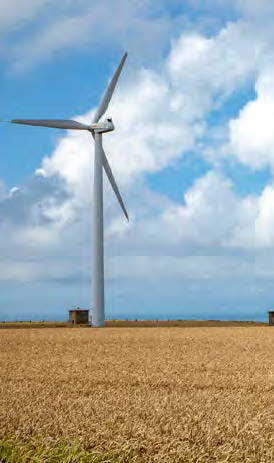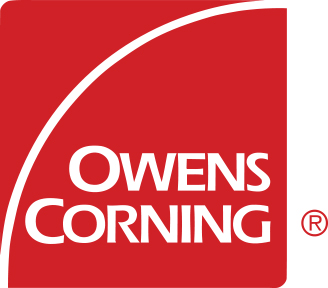Owens Corning's Circular Economy Performance - Wind Turbine Blades

Originally published in Owens Corning's 2021 Sustainability Report
CIRCULAR ECONOMY PERFORMANCE
Wind Turbine Blades
Wind power remains a central component of the world’s renewable energy strategies, and Owens Corning is proud to produce glass used in the reinforced composite materials that make wind turbine blades and nacelles. To fulfill wind power’s potential, we also recognize the need to develop end-of-life solutions for these blades. Left unchecked, there could be as much as 2.2 million metric tons of high-volume wind blade waste in landfills by 2050 in the U.S. alone.
In the U.S., Owens Corning collaborates with organizations such as the American Composite Manufacturers Association (ACMA) and the Institute for Advanced Composites Manufacturing Innovation (IACMI), as well as other stakeholders in the wind industry value chain to develop solutions to effectively deal with this amount of waste. In addition to extending the service life of turbine blades, from 20 years to 30 or 40 years, we have been looking at ways to close the loop where waste is concerned.
In addition, efforts are being made to find above-ground storage options, which allow for a quick transformation from end-of-life in a landfill to other, more beneficial solutions. For example, the materials can be used in cement kilns where energy and chemical content can be extracted, and the remaining inorganic materials are a raw material source for the cement.
We are collaborating with industry partners to develop processes to cut and section wind blades, strip them of their metal, and shred them. We are also working with startup companies to conduct controlled pyrolysis processes for successful recovery of energy and glass fiber. In addition, current efforts are underway with the National Renewable Energy Laboratory and blade manufacturers to pelletize the shredded blade as a potential molding material for new wind blades. The pellets can also be used as a molding material for a variety of applications, including use in packaging, decking, and railroad tie manufacturing. The challenge is to be able to do this economically, at the scale required to fully divert blades from the landfill.
Owens Corning is also a partner in the ZEBRA (Zero WastE Blade ReseArch) project in Europe, a cross-sector consortium launched in 2020 to develop the first 100% recyclable wind turbine blade. A number of products have been manufactured with input from our Chambéry wind lab, including glass fiber reinforcements that enhance composite performance when used with a new thermoplastic resin. In addition, testing is ongoing to identify resin-matrix interface properties that will deliver the optimal solution for our customers. Owens Corning has also been invited to participate and is engaging with another ongoing European consortium focused on deconstructing and recycling first generation wind turbine blades. These blades use thermoset resins which by design are more difficult to deconstruct and recycle. Owens Corning will be exploring options to rejuvenate recovered glass fibers from these processes or remelt in our production facilities, which effectively converts unusable glass to new glass made from recycled content.

